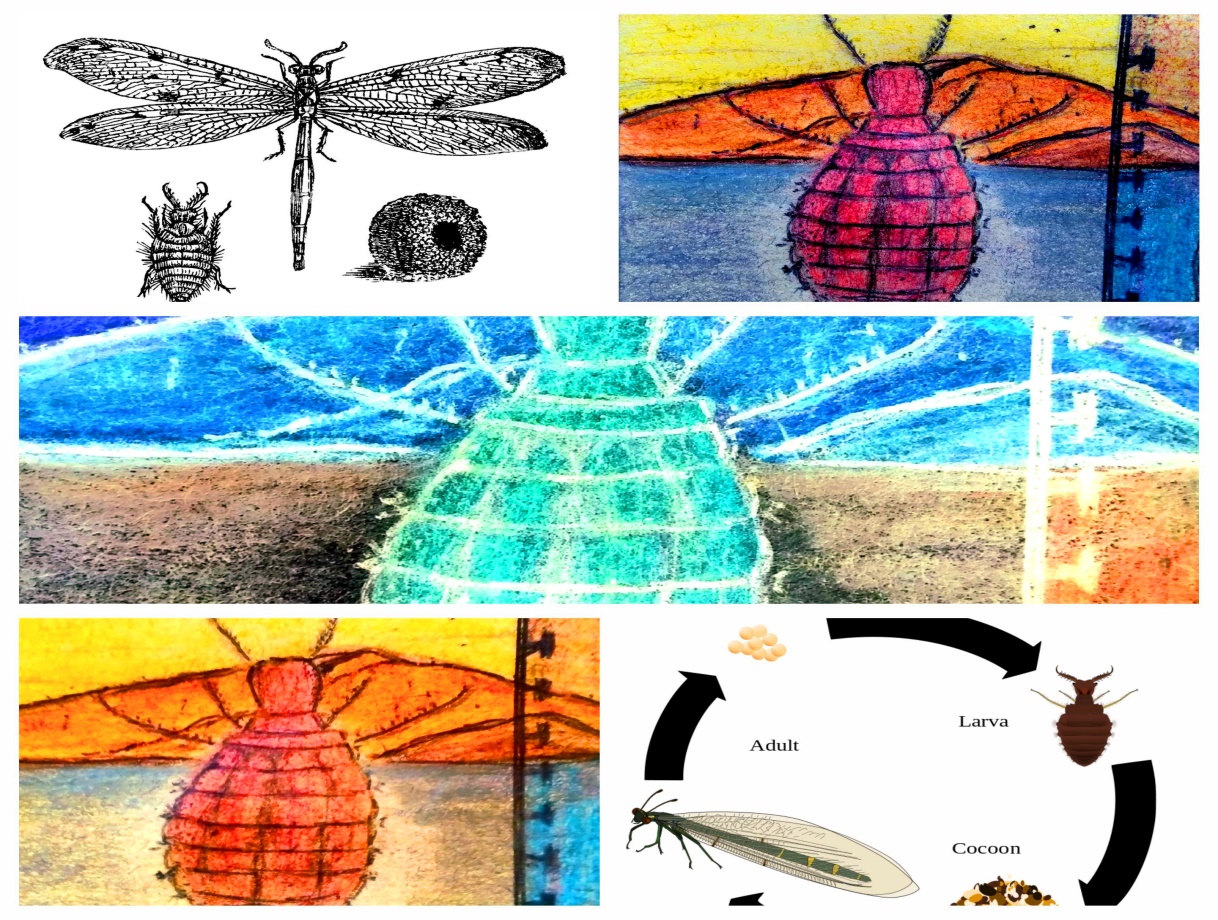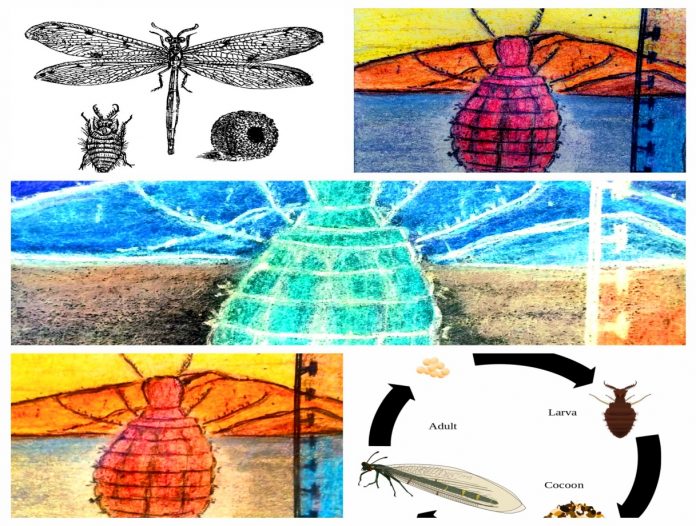Booking a magical glimpse inside Etnia Nativa
Article by Etnia Nativa call us 592 2702 and book your experience!
Etnia Nativa shares a different story weekly from its cabinet of curiosities (see episode 211). This week it’s about the “ant-lion,” also known as the Afro-Caribbean ‘Nanzee’, a mythical insect feared and worshiped by different cultures of the world.
Most residents of Aruba remember their childhood experience playing with the “Yanqueque or Nanzee” mentioned in many children’s stories. It is a small insect that lives in a sand pit and is summoned by agitating a thin straw along the edges of the pit or by dropping a live ant into its trap to provoke the “ant-lion” to respond by throwing plumes of sand in its attempt to catch it.

The story of Antlion is so famous that it has a native Aruban charm in Papiamento, which goes as follows:
“Yanqueque yanqueque machi ta pidi funchi cu waranawa. Yanqueque yanqueque sali djei, bo cas ta na candela”.
Translated to English
“Yankee Kee mom is asking for cornmeal cake and salt fish”. “Yankee Kee, get out of there since your house is on fire”.
The name Nanzee came from our sister island, Curacao, where folklore has taken on a more African flair when they talk about the Antlion, a very famous fable personage that everyone has heard of in the Dutch Antilles and always gets its way.
We must mention that records of antlions have existed since the Middle Age, when there was a literary genre called Bestiary that explains our protagonist, the Nanzee or Yankeekee, which is a collection of short descriptions of all sorts of animals, real and imaginary, accompanied by a moralizing allegory. Although a bestiary deals with the natural world, it was never meant to be a scientific text and should not be read as such. However, some observations may be quite accurate, but they are given the same weight as a fabulous account. A creature called the “Antlion” appears in some bestiaries that derive from a symbolic Greco-Christian book that presents the ancient ant-lion as a moral being that starves to death at birth due to its dual nature (half ant, half lion). While other Bestiaries used the story of gold-seeking ant-lions, other Bestiaries accounts moved away from their sources, geographically and historically, and the Ant-lions were replaced by ants.
In medieval literature, there is a certain story in which, in one way or another, the ant-lion appears as the ferocious “Ethiopian ants” of ancient times that guarded the gold, where numerous ants climb up and down the legs of a horse depositing golden sand in the carrying chair, or another story that tells about the “Ethiopian ants” (ant-dogs) attacking armed gold thieves.
Nanzee (Ant-lion”) is incorrectly compared with a spider as a relevant myth throughout the world and how myths, unlike folklore, serve to explain mysterious natural phenomena, the outsmarter or stories related to the origin of the world, the agricultural fertility cycle, or death; the Ant-lion appears on the American continent as the mythical spirit that dies, rather than being reborn and flying away as a powerful spirit.
The Navaho people speak of the fertility myth ‘Anlt’áni·, or “ripener” (“the particular one that causes ripening”), which is the name they gave to certain insects: lacewings and tree crickets, but also occasionally ant-lions. According to Navaho mythology, the “ripener,” incorrectly translated as “corn beetle,” plays a role in the ripening of corn, and the vibration these insects emit is said to be indicative of this power. Additionally, the power of giving voice is attributed to Cornbeetle Girl because she gave voices to the first people created from corn.
However, ant-lion stories are also common in native South American folklore. Like those of the Ashaninka or Campa nation peoples who inhabit the Amazon basin in eastern Peru. Some of their myths attribute demonic qualities to the ant-lions. As the demons of the Campa universe are anything that can cause physical harm to humans, they consider the extremely thin body of an adult ant-lion that looks like a small dragonfly to be a demon.
So if you are interested in connecting and really know all about your travel destination: our flora, fauna, geology, history, autochthonous art, as well as the true identity of the island. You should book a visit to Etnia Nativa, a unique native gem! Let Anthony, our acclaimed cultural columnist, guide and lecture you regarding the most interesting and revealing stories about Aruba’s undiscovered native ethnicity, an adventure beyond beaches and tourist traps. Visit his magnificent dwelling that integrates reused materials with nature bursting with culture and island heritage! Whats App +297 592 2702 etnianativa03@gmail.com




















